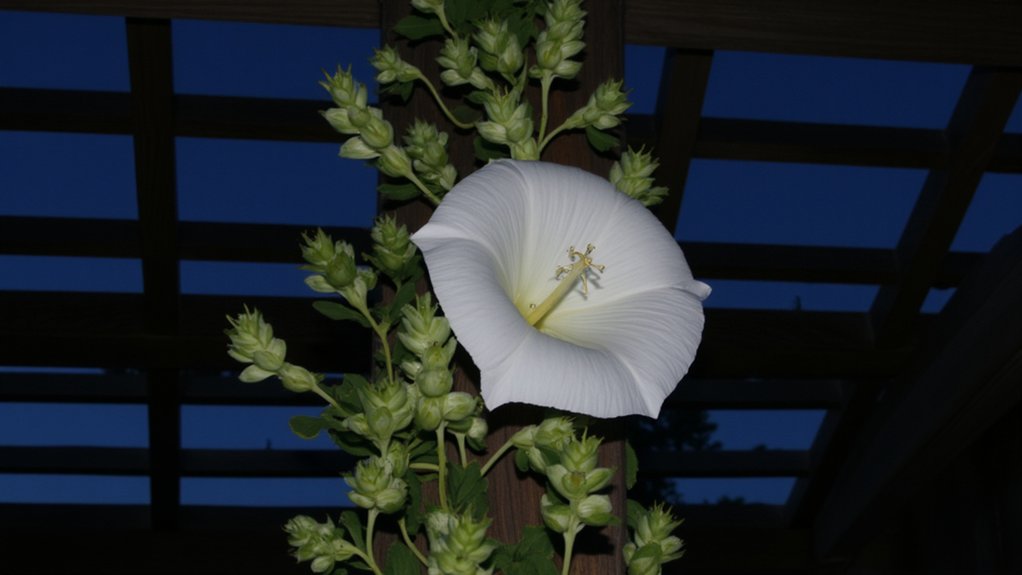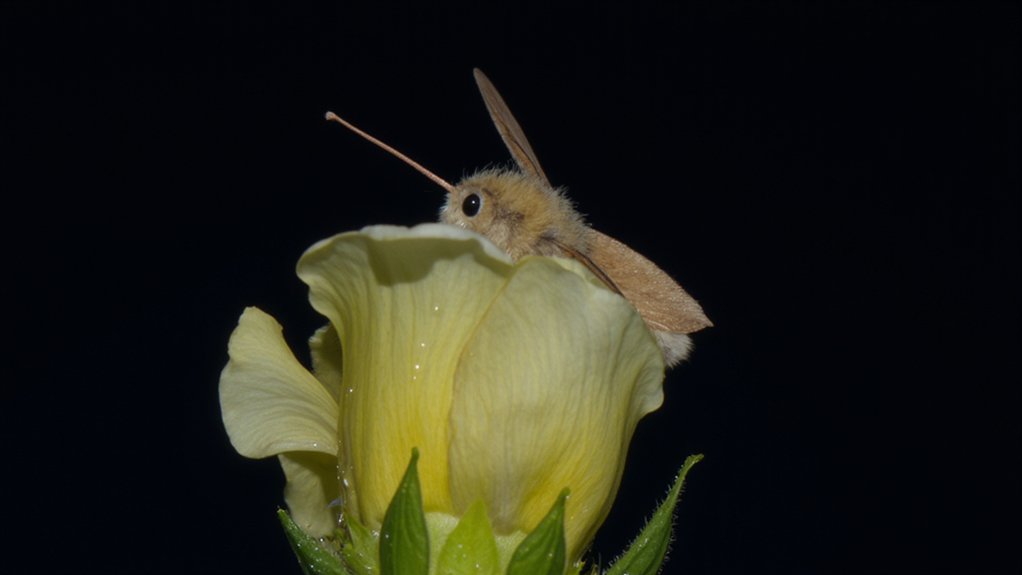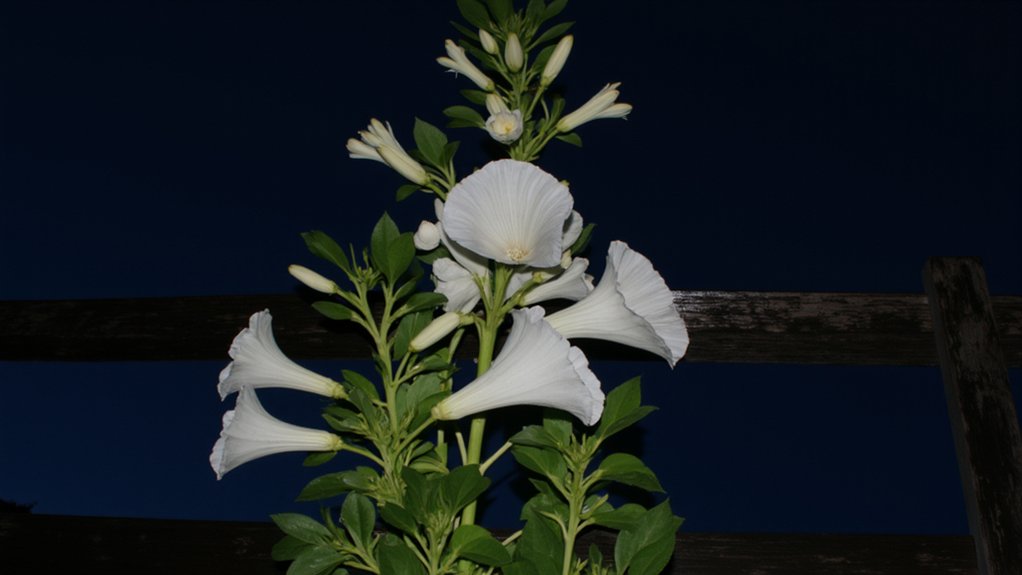Have you ever wondered why some flowers wait until the darkest hours to reveal their splendor? You’ll find these nocturnal botanicals operating on nature’s night shift, unfurling their petals precisely when most gardens go quiet. While daytime blooms chase the sun, these evolutionary mavericks have mastered life after dark, developing specialized traits to attract moths, bats, and other nocturnal pollinators. Their fascinating adaptations hold secrets that could change how you view your garden’s potential.
Contents
The Evolutionary Journey of Night-Blooming Species

While many plants adapted to thrive in sunlight over millions of years, a fascinating subset evolved to bloom exclusively at night. You’ll find these species developed specialized features, like light-colored petals that reflect moonlight and intense fragrances that attract nocturnal pollinators.
During the Cretaceous period, roughly 100 million years ago, night-blooming plants began diverging from their daytime counterparts. They’ve adapted to fill specific ecological niches, developing larger flowers and stronger scents than their daytime relatives.
You can trace this evolutionary path through fossil records, where you’ll notice gradual changes in petal structure and specialized nectar production mechanisms.
Nature’s Nocturnal Pollinators and Their Plant Partners

As darkness descends each evening, an intricate dance between nocturnal pollinators and night-blooming plants begins. You’ll find moths, bats, and nocturnal bees emerging to seek out flowers that open between dusk and dawn, guided by bright white petals and sweet fragrances.
During these nighttime interactions, sphinx moths hover before evening primrose blooms, while lesser long-nosed bats navigate to saguaro cactus flowers. The plants reward their visitors with extra-sugary nectar, containing up to 35% sugar content compared to day blooms’ typical 25%.
Watch closely, and you’ll notice these flowers’ specialized shapes, like the 6-inch trumpet of the moon flower, perfectly matching their pollinators’ feeding structures.
Most Fascinating Night-Flowering Plants Around the World

Have you ever wondered which plants come alive as the rest of nature slips into darkness? The world’s most fascinating night-bloomers include the Queen of the Night cactus, which opens its 8-inch white flowers for just six hours annually.
You’ll find the rare Ghost Orchid blooming in Florida’s swamps, displaying ethereal white petals that seem to float in mid-air. The Evening Primrose unfolds its yellow blossoms precisely at dusk, while the Night-Blooming Jasmine releases its potent fragrance after sunset.
Don’t forget the Moonflower, whose dinner plate-sized white blooms spiral open in minutes as twilight approaches, closing forever by dawn’s first light.
Survival Mechanisms and Adaptations in Dark Hours
These nocturnal plants don’t just bloom beautifully – they’ve developed remarkable adaptations to thrive in darkness. You’ll find they’ve evolved larger, paler flowers that reflect moonlight, making them visible to night-flying pollinators like moths and bats.
Their petals contain specialized cells that enable rapid opening at dusk, often within 30 minutes of sunset. Many species, including the night-blooming jasmine, release intense fragrances after dark that can travel up to a quarter-mile downwind.
To conserve energy, these plants have modified leaf structures that close their stomata during daylight, reducing water loss while maximizing CO2 absorption at night.
Growing Your Own Moonlight Garden
While traditional gardens shine during daylight hours, creating a moonlight garden lets you enjoy nature’s nocturnal beauty right in your backyard. Start by selecting night-blooming plants like evening primrose, moonflowers, and night-blooming jasmine.
Position white or silver-foliaged plants strategically, spacing them 12-18 inches apart. You’ll want to include plants like dusty miller and lamb’s ear, which reflect moonlight effectively. Install solar-powered landscape lights 24 inches above ground level to enhance the garden’s ethereal glow.
Plant your moonlight garden in spring, after the last frost. Water deeply at soil level, and you’ll see first blooms within 6-8 weeks.
